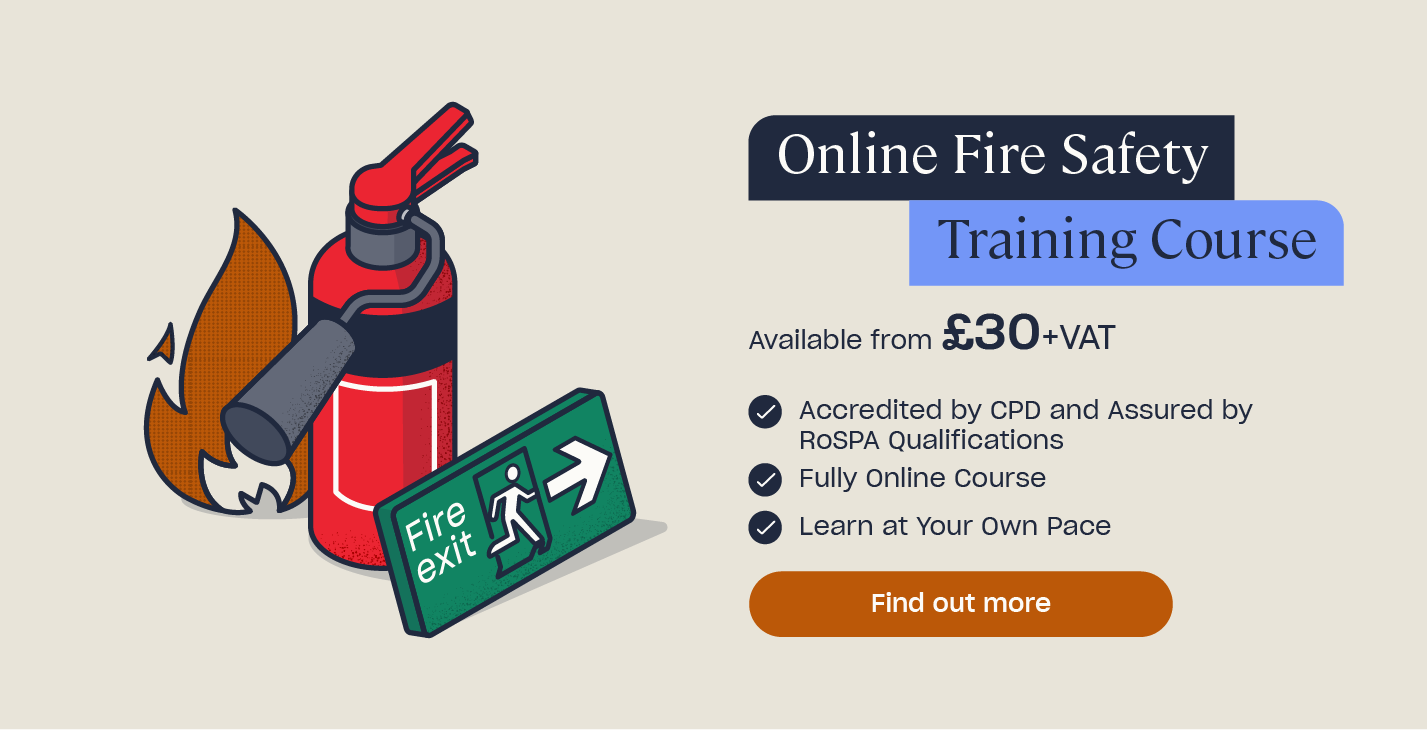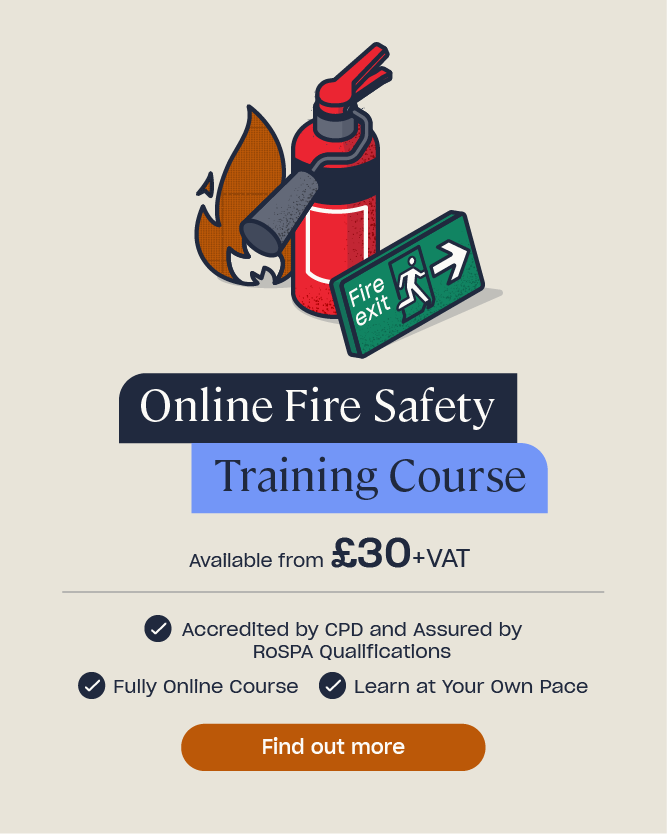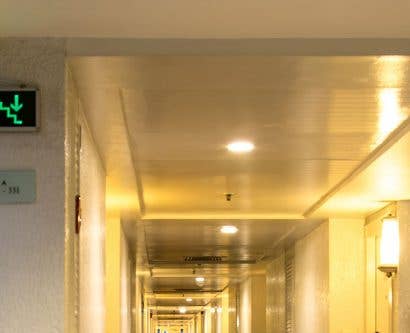Fire Risk Assessment Template
All businesses are legally required to implement and maintain sufficient fire safety measures. Doing so is crucial for ensuring the safety of employees, as well as potential visitors and members of the public. Therefore, if you’re responsible for carrying out risk assessments in your business, you must understand what aspects of the workplace you need to assess and what hazards to consider.
A risk assessment for fire safety requires you to inspect numerous factors in your workplace, which can be easy to overlook or mismanage without proper training and planning. Therefore, you should consider using a template to help you organise the process and ensure you cover everything important during your assessment.
We provide a free blank risk assessment template that you can use for your risk assessment for fire safety, as well as a fire safety checklist that can help inform your assessment.
Who Needs to Carry Out a Fire Risk Assessment?
The Regulatory Reform (Fire Safety) Order 2005 requires all businesses to regularly carry out suitable and sufficient risk assessment for fire safety. A risk assessment must identify whether the business’s existing measures are sufficient and determine how to improve them if they are not. This requirement applies to all types of work-related buildings, structures, and open spaces, including offices and shops, care and education settings, warehouses, construction sites, and more.

A full list of businesses that must carry out fire risk assessments includes:
- Offices.
- Shops and other retail premises.
- Hospitals and social care homes.
- Schools and other education settings.
- Construction sites.
- Pubs, bars, cafés, and restaurants.
- Places of worship.
- Community premises and sports centres.
- Factories and warehouses.
- Shared accommodation areas.
- Tents and marquees.
- Hotels and other premises that serve paying guests.
- Rented properties and accommodation.
This list is comprehensive, but it is not exhaustive.
Need a Certificate, Fast?
Understand your legal fire obligations with our fully online Fire Risk Assessment Training. It’s CPD accredited, assured by RoSPA and your certificate could be with you in under 3 hours! We also offer Fire Safety Awareness Training and Fire Warden Training.
The Fire Safety Order only applies to non-domestic premises and so does not apply to people’s private homes. However, landlords must fulfil several legal duties to ensure their properties meet suitable fire safety standards.
Read our article on the health, safety and legal responsibilities for landlords if you’d like to know more: The Health, Safety & Legal Responsibilities of Landlords
Fire Risk Assessment Template
The responsible person must inspect several areas of the workplace when carrying out a risk assessment for fire safety. For example, they need to assess common hazards, warning and detection systems, escape routes, fire suppression equipment, personal emergency evacuation plans, and more. Our template can be used to record all your findings, while our checklist acts as a reminder of all the key factors you should check when carrying out a risk assessment.
To get the full benefit from a risk assessment template, you must understand the fire safety requirements that every business needs to fulfil. Therefore, if you are responsible for carrying out a risk assessment, you must have the necessary skills, knowledge, and experience to be competent. Otherwise, you may find it difficult to know what exactly you’re looking for.
How to Use A Fire Risk Assessment Template
Our risk assessment template will help you to record all your findings in an easy to use format and so you can refer back to it, while our checklist will help you remember what to inspect as you carry out your risk assessment. As you walk through the premises, refer to the checklist’s contents and fill it in as you go, then transfer anything necessary into your risk assessment template.
It’s useful to do this on a room-by-room basis and mark them off one by one, including hallways, stairwells, and, most importantly, all escape routes.

Keep in mind that your risk assessment must follow these five steps:
- Identify the hazards. You must carry out various actions to identify hazards in your workplace. For example, you should walk around the premises, ask staff for feedback, and check manufacturer’s information or data sheets.
- Determine who might be harmed and how. Your business needs to identify how it’ll protect vulnerable people in the workplace from fire hazards. For example, those with limited mobility may need access ramps, while those who are hard of hearing might need a different type of fire alarm or pager.
- Identify risks and decide on precautions. After identifying the fire hazards and determining who may be harmed in your workplace, you must assess the level of risk that the hazards pose and implement control measures accordingly.
- Record findings. Recording risk assessment findings is required by law where a workplace has five or more employees. However, you should do so even if your workplace has fewer.
- Review and update. Over time, your workplace will likely change, which means new hazards could develop or existing measures may no longer be sufficient. You must carry out new risk assessments whenever significant changes occur.
Our fire safety checklist will help you complete the first and second steps, but it also helps to fulfil the other steps. It enables you to decide where precautions are necessary, which you can then record on the risk assessment template to create a physical record of your findings, which as mentioned above is legally required if you have five or more employees. Furthermore, your records will be a good point of reference when you next review and update your assessment.
What to Read Next:
- Fire Safety Awareness Training
- Hotel Fire Safety Guide for Managers
- Fire Extinguisher Quiz
- Fire Risk Assessment Quiz
- Fire Warden Quiz
- Fire Safety Quiz
- How to Carry Out a Fire Drill in Your School
- Fire Risk Assessment for the Hospitality Industry








